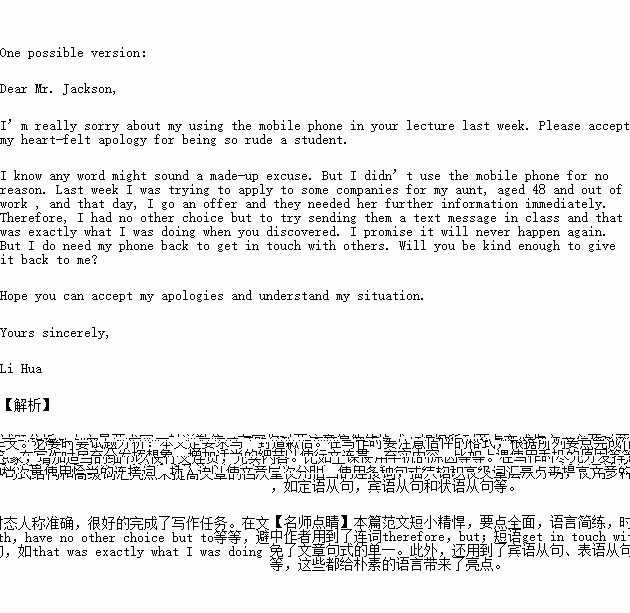题目内容
书面表达
假如你是李华, 上周在外教Mr. Jackson 的口语课上使用手机被老师发现, 手机被收走。 请给外教写一封道歉信, 内容应包括以下要点:
1. 表示歉意;
2. 解释上课使用手机的原因;
3. 提出自己的请求并适当表态。
注意:1. 可适当添加细节使文章连贯;字数100左右;
2. 信的开头和结尾已给出, 不计入总词数。
Dear Mr. Jackson,
__________________________________________________________________________
__________________________________________________________________________
__________________________________________________________________________
Yours sincerely,
Li Hua
练习册系列答案
 阅读快车系列答案
阅读快车系列答案
相关题目


